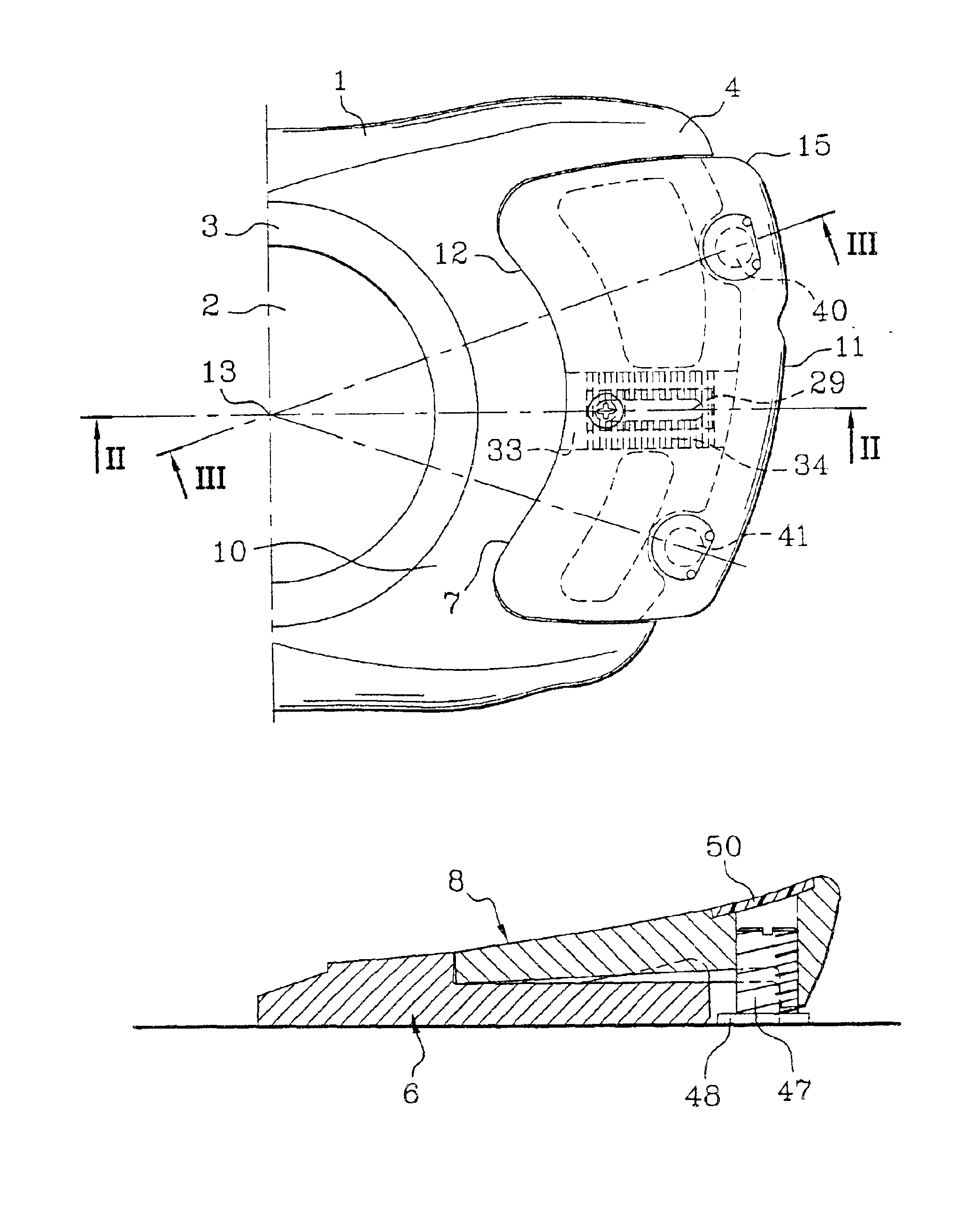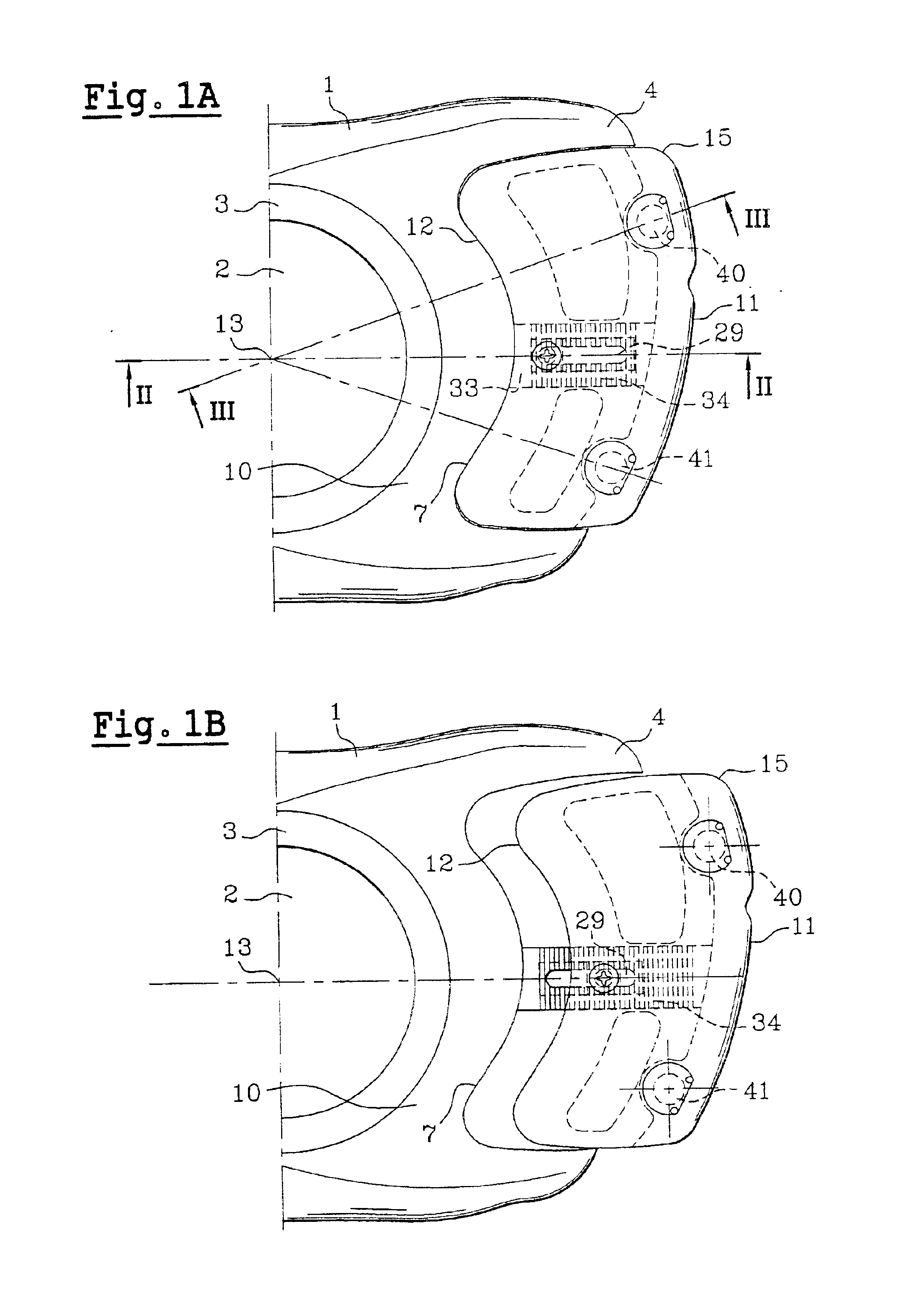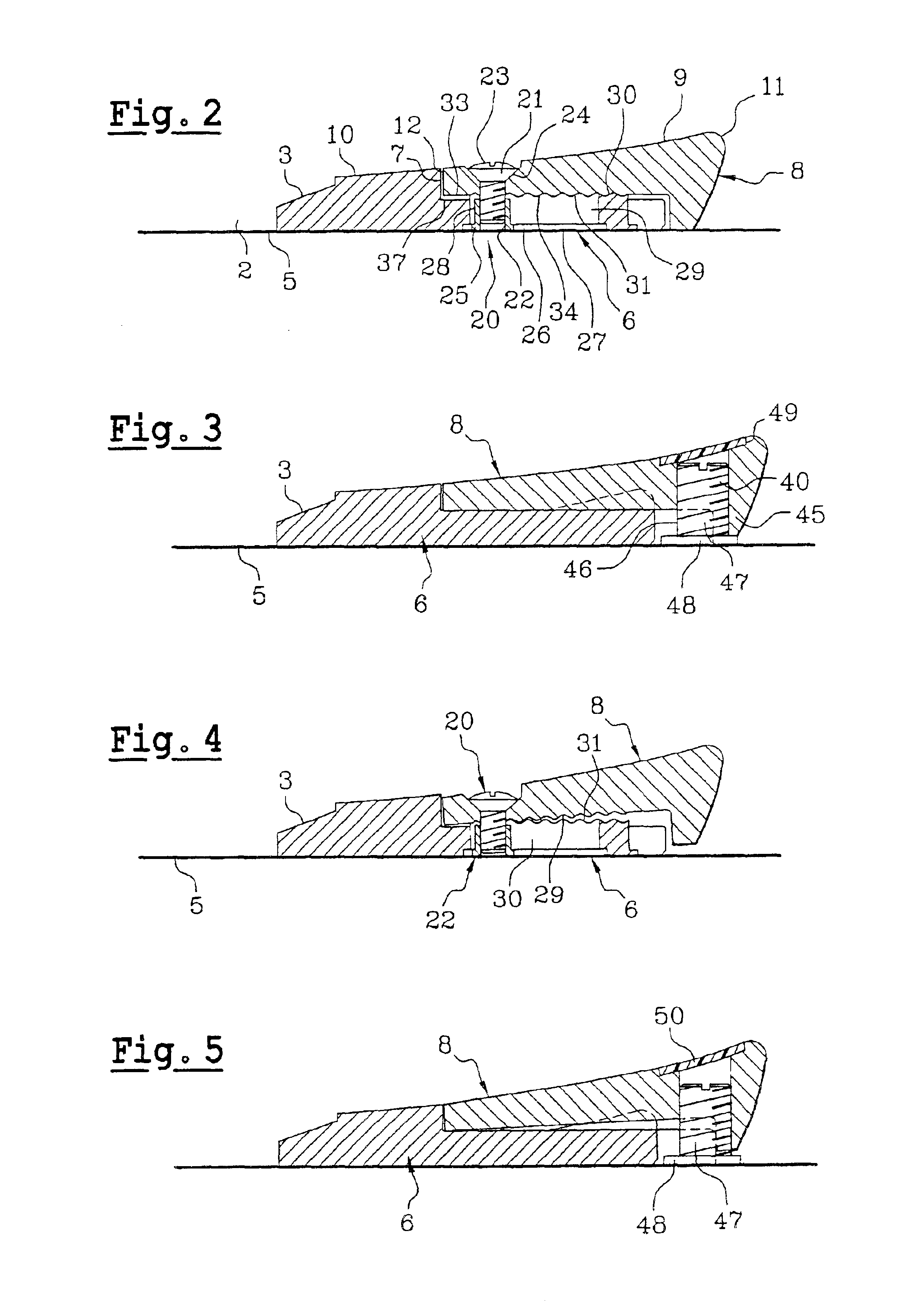Element forming an inclined wedge used in a snowboard binding
a technology of a wedge and an element, which is applied in the direction of skis, sports apparatus, skates, etc., can solve the problems of inability to adapt to different boot sizes, the effect of bearing force transmission is greater at the front end of the boot, and the volume free of material does not allow the user
- Summary
- Abstract
- Description
- Claims
- Application Information
AI Technical Summary
Benefits of technology
Problems solved by technology
Method used
Image
Examples
Embodiment Construction
As already mentioned, the invention relates to an element forming a wedge intended to be mounted at the front and / or at the rear of a snowboard binding in order to fill the volume comprised between the upper face of the board and the bottom of the sole, when the latter is curved upward. Several designs can be used, all observing the same principle, according to which the inclination of the upper face of the wedge can be adjusted.
First Mode of Embodying the Invention
FIGS. 1a, 1b and 2 to 5 relate to a first embodiment, in which the front portion of the base plate (1) constitutes one of the plates of the characteristic element. More specifically, this base plate has in its center an aperture (2) intended to receive the disk for adjusting the orientation of the binding. The chamfered portion (3) actually serves for locating the disk (not shown).
The front portion (4) of the base plate rests directly on the upper face (5) of the board. This front portion (4) of the base plate forms in it...
PUM
 Login to View More
Login to View More Abstract
Description
Claims
Application Information
 Login to View More
Login to View More - R&D
- Intellectual Property
- Life Sciences
- Materials
- Tech Scout
- Unparalleled Data Quality
- Higher Quality Content
- 60% Fewer Hallucinations
Browse by: Latest US Patents, China's latest patents, Technical Efficacy Thesaurus, Application Domain, Technology Topic, Popular Technical Reports.
© 2025 PatSnap. All rights reserved.Legal|Privacy policy|Modern Slavery Act Transparency Statement|Sitemap|About US| Contact US: help@patsnap.com



